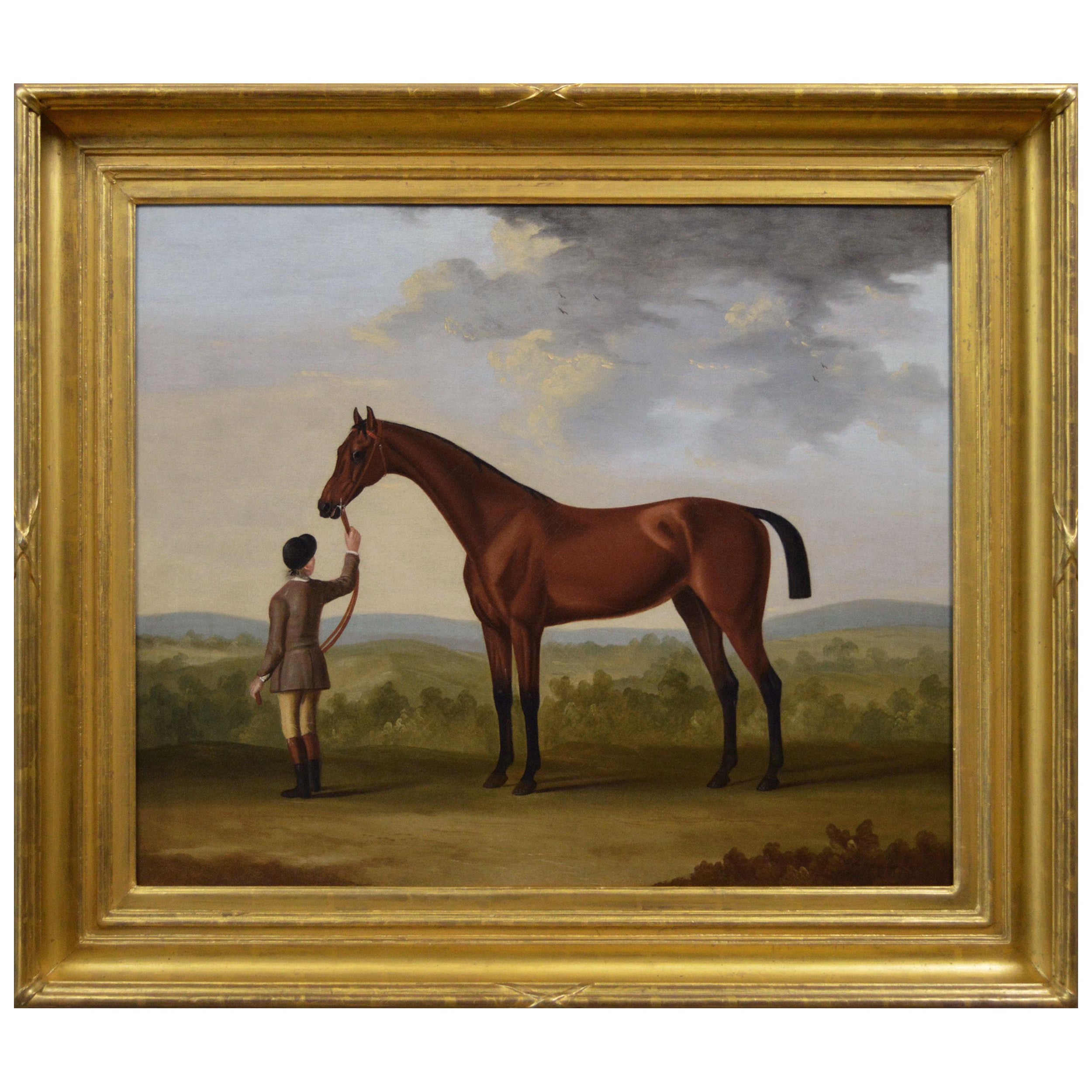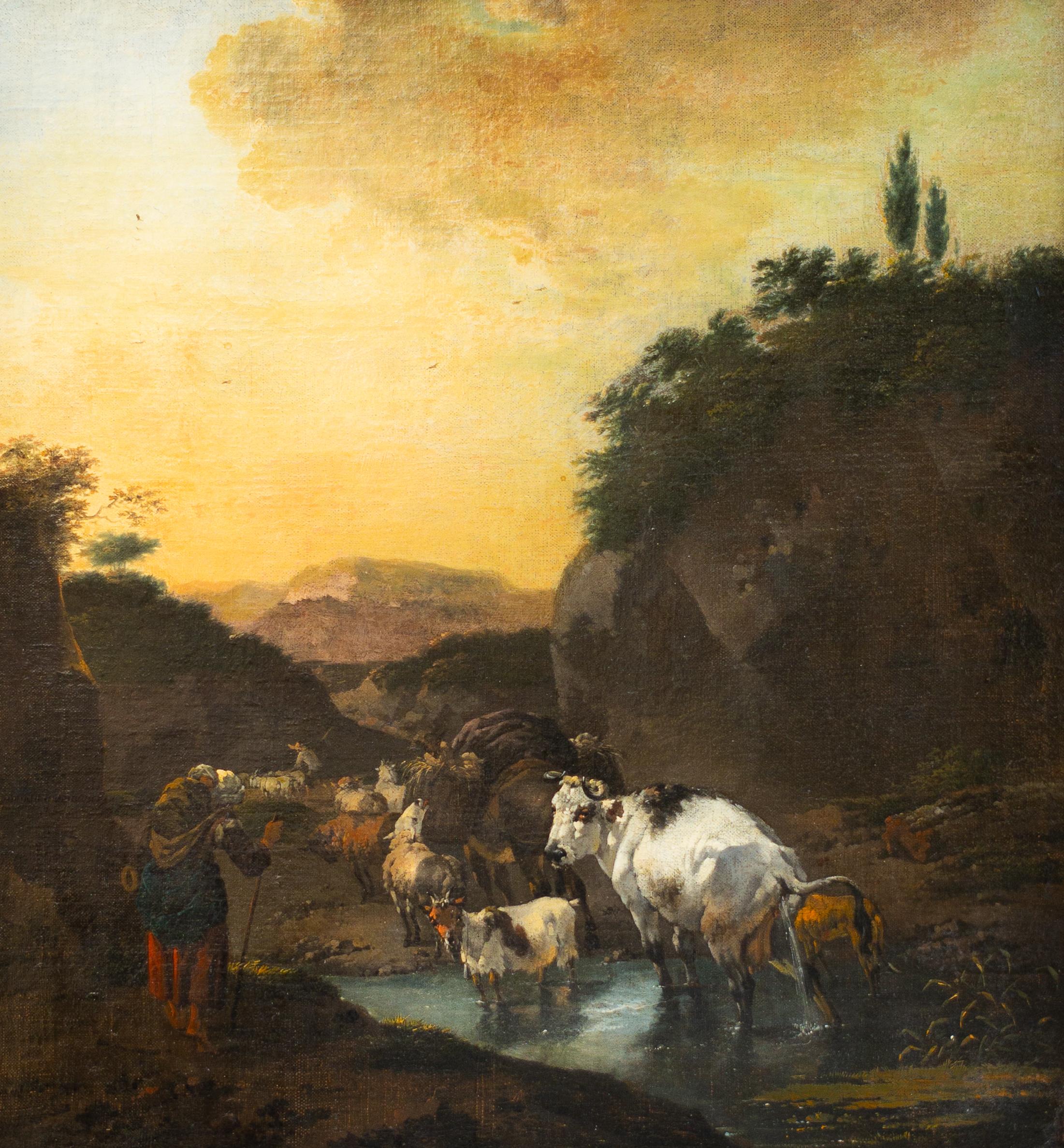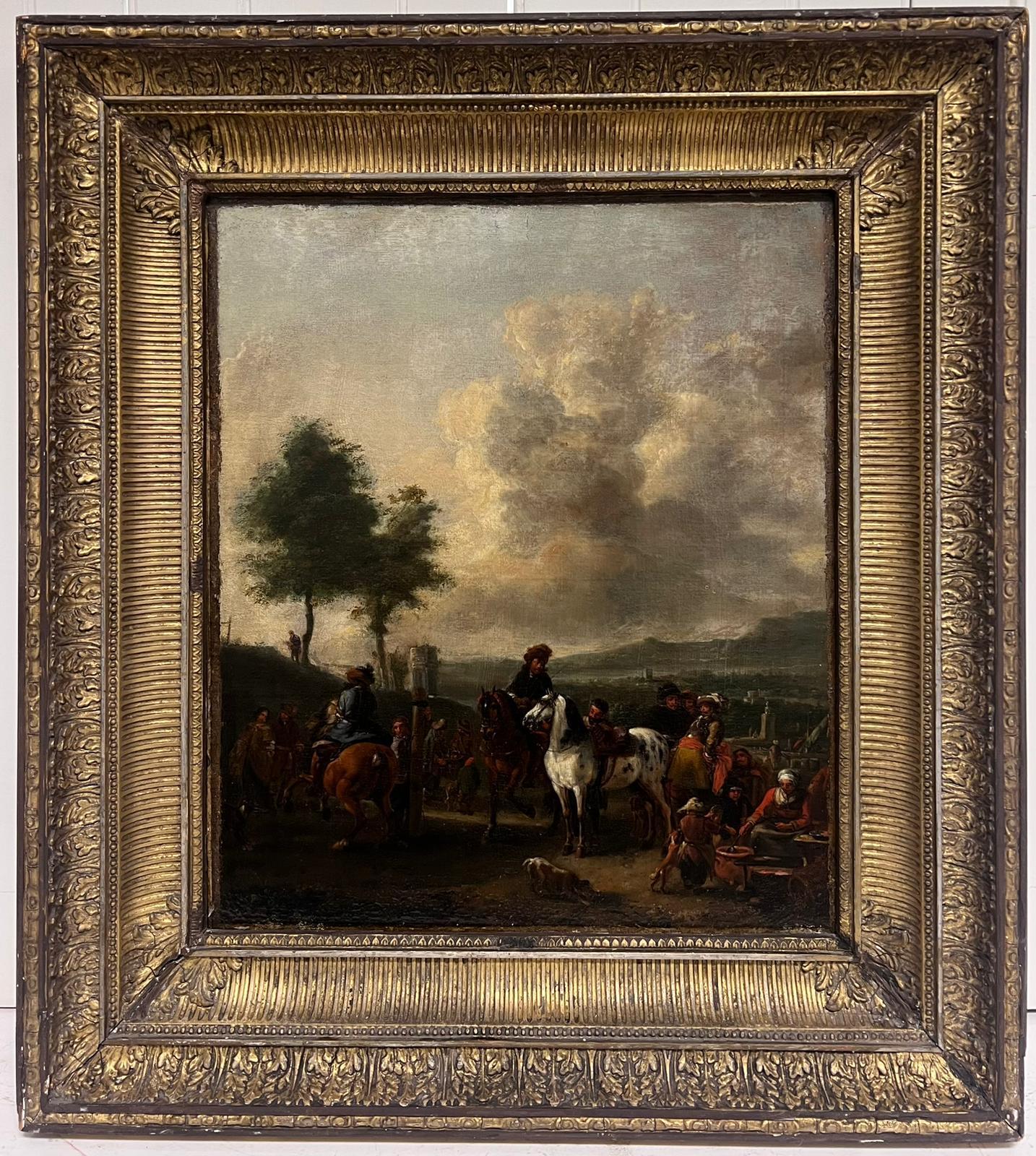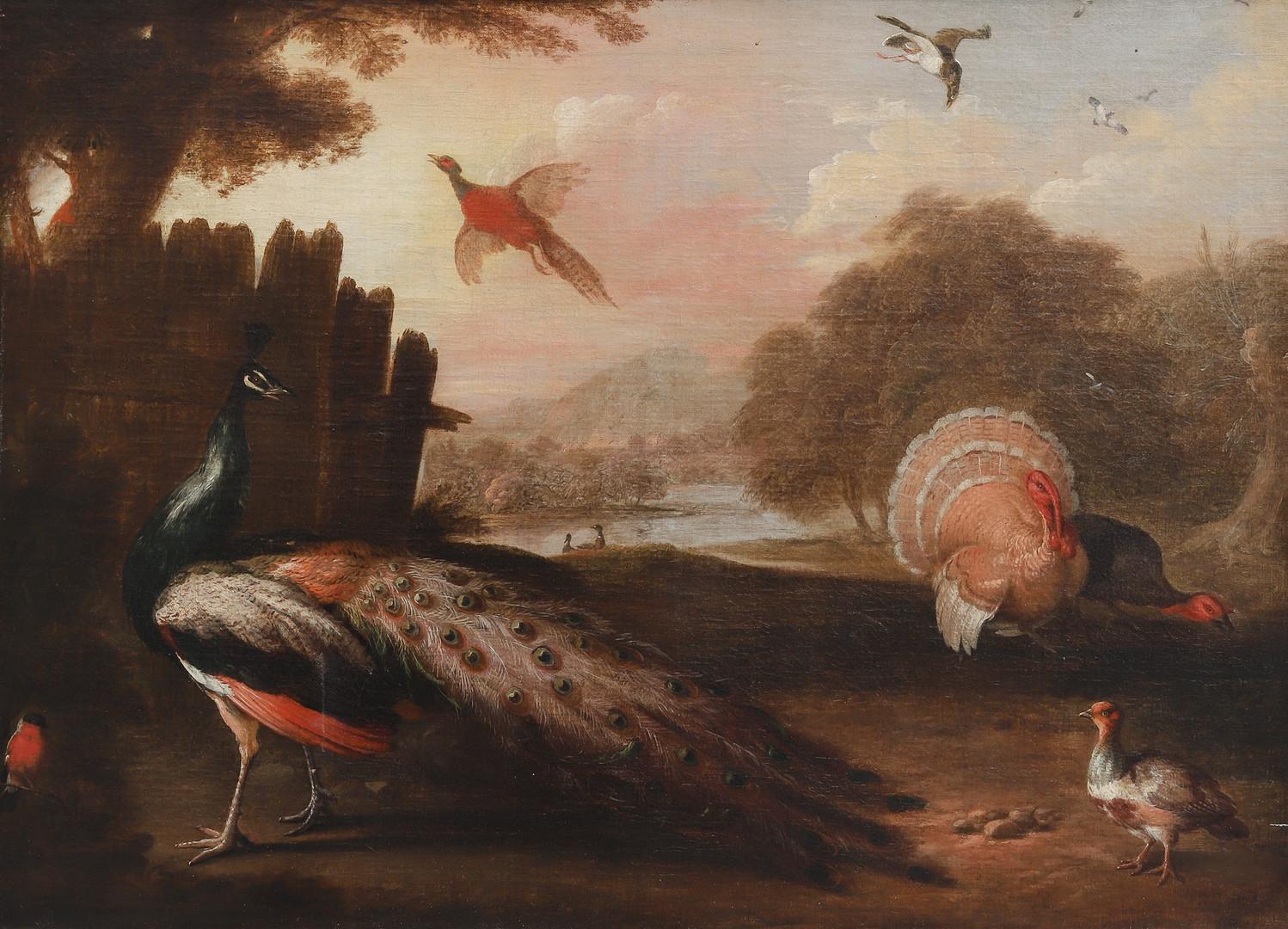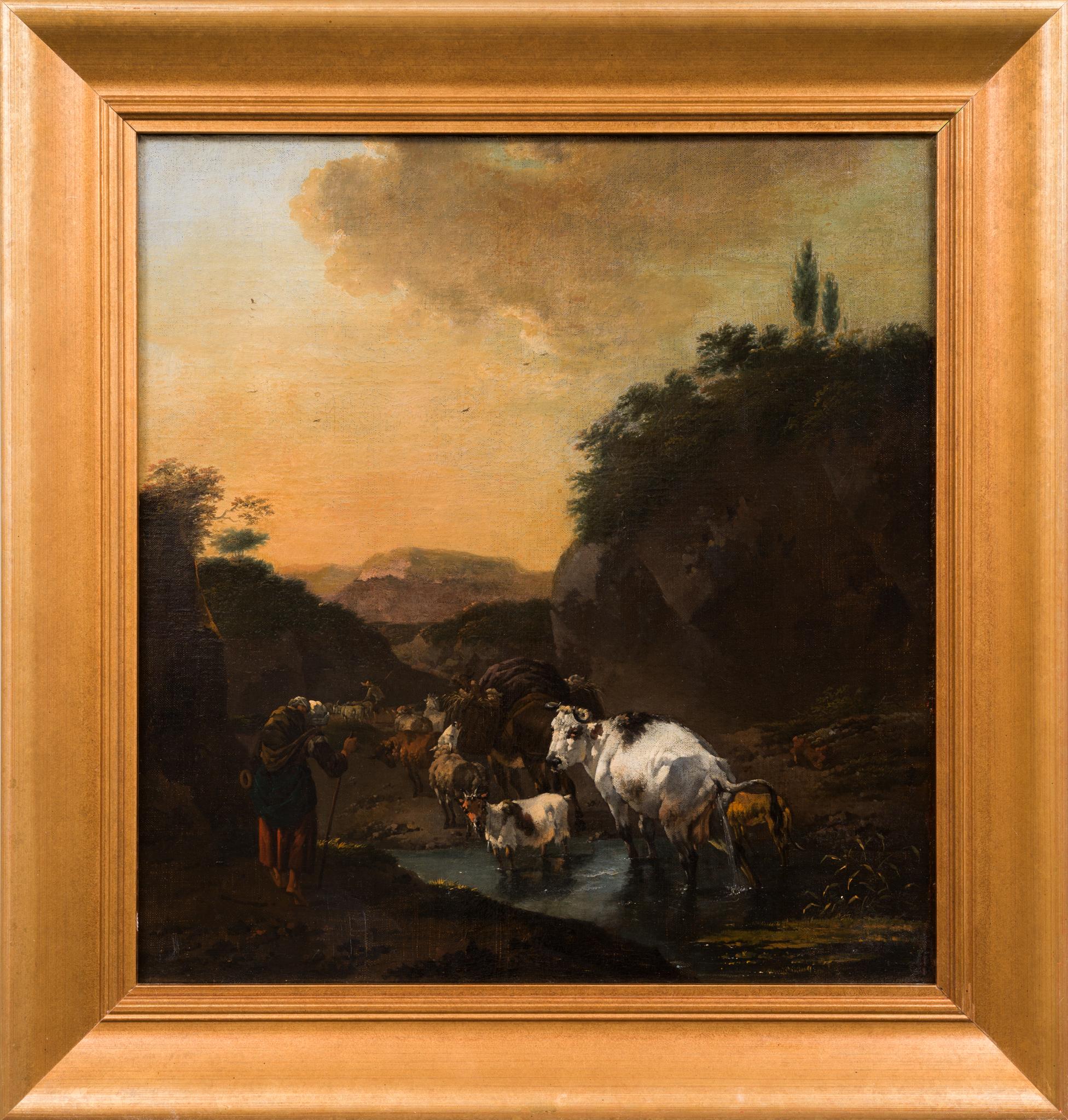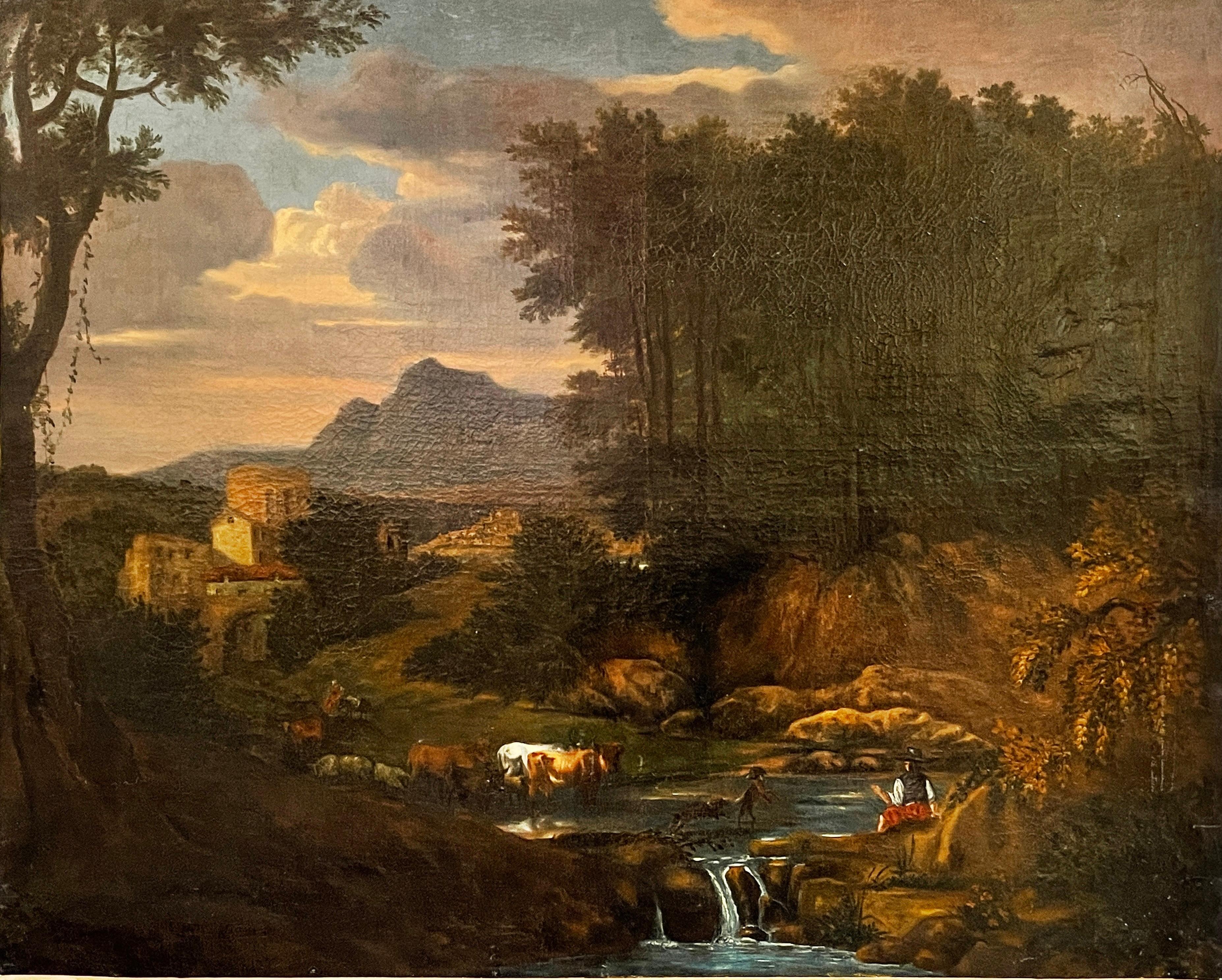Items Similar to A Wolf
Want more images or videos?
Request additional images or videos from the seller
1 of 2
Carl Borromäus Andreas RuthartA Wolf
About the Item
Provenance:
The Marchesi Strozzi, Palazzo Strozzi, Florence
Sale, Christie’s, London, May 20, 1993, lot 315, as by Carl Borromaus Andreas Ruthart, where acquired by:
Private Collection, New York
Ruthart has been called one of the most intriguing artistic personalities of seventeenth-century Europe. He was born and trained in Danzig, before visiting Rome in 1659. From 1663 to 1664 he was in Antwerp, registered in the painter’s guild as “Carlo Routtart,” where he studied Flemish animal painting, especially the work of Jan Fyt and Frans Snyders.
Ruthart specialized in the depiction of animals—in particular, wild animals—at rest, in conflict, fighting, and being hunted. His grander compositions incorporated them into the surrounding scenery, as well as depicting them in idyllic settings, in mythological, and in biblical contexts. Ruthart had a superb understanding of animal anatomy and was adept at depicting animals in motion and at rendering fur with astonishing fidelity. His work is characterized by restrained, cool colors (silver-grey and brown for rocks, blue-green for vegetation and vivid colors for the animals themselves).
In the 1660s Ruthart travelled through Regensburg to Vienna, where he worked for Prince Charles Eusebius of Liechtenstein. In 1672 he was in Venice and Rome, where he saw the work of Giovanni Battista Castiglione. That year he entered the Celestine monastery in Rome and painted altarpieces for the monastery church of S Eusebio. He later moved to the Abbey of S. Maria di Collemaggio in L’Aquila, where he was known as “Pater Andrea” and where he remained until his death.
Paintings by Ruthart are to be found in princely collections and museums across Europe, but the largest holding of the artist’s work remains in L’Aquila, exhibited in the Sala Carlo Ruther of the Museo Nazionale d’Abruzzo. A group of Ruthart’s oil studies of animals from life were retained by the artist and utilized by him throughout his career as references for his larger compositions. Nine superb examples passed to the collection of the Marchesi Strozzi in Florence and were dispersed at auction in 1993. The present study of a wolf is one of these. It was used by Ruthart in several compositions, including The Fable of the Fox and the Sick Lion (Galleria Nazionale, Rome), Ulysses and Circe of 1666 (formerly, Dresden Gemäldegalerie), and in the lower left of the signed Wild Animals in a Mountain Gorge (Nationalmuseum, Stockholm), illustrated below.
- Creator:Carl Borromäus Andreas Ruthart (1630 - 1703)
- Dimensions:Height: 9 in (22.86 cm)Width: 11 in (27.94 cm)
- Medium:
- Movement & Style:
- Period:
- Condition:
- Gallery Location:New York, NY
- Reference Number:1stDibs: LU1026198482

About the Seller
5.0
Recognized Seller
These prestigious sellers are industry leaders and represent the highest echelon for item quality and design.
Established in 1997
1stDibs seller since 2012
17 sales on 1stDibs
Typical response time: 11 hours
- ShippingRetrieving quote...Ships From: New York, NY
- Return PolicyThis item cannot be returned.
More From This SellerView All
- View of St. John’s Cathedral, AntiguaLocated in New York, NYProvenance: Robert Hollberton, Antigua, ca. 1841 Private Collection, New York The present painting depicts Old St. John’s Cathedral on the island of Antigua. The church was erected in the 1720s on the designs of the architect Robert Cullen. It measured 130 feet by 50 feet with north and south porches 23 x 20 ½ feet. The tower, 50 feet high with its cupola, was added in 1789. The church was elevated to the status of a cathedral, but disaster struck in the form of an earthquake that destroyed the building on 8 February 1843. A memorandum of that date relates the event: “On Wednesday, 8th February, 1843, this island was visited by a most terrific and destructive earthquake. At twenty minutes before eleven o’clock in the forenoon, while the bell was ringing for prayers, and the venerable Robert Holberton was in the vestry-room, awaiting the arrival of persons to have their marriage solemnized, before the commencement of the morning service, the whole edifice, from one end to the other, was suddenly and violently agitated. Every one within the church, after the first shock, was compelled to escape for his life. The tower was rent from the top to the bottom; the north dial of the clock precipitated to the ground with a dreadful crash; the east parapet wall of the tower thrown upon the roof of the church; almost the whole of the north-west wall by the north gallery fell out in a mass; the north-east wall was protruded beyond the perpendicular; the altar-piece, the public monument erected to the memory of lord Lavington, and the private monuments, hearing the names of Kelsick, Warner, Otley, and Atkinson, fell down piecemeal inside; a large portion of the top of the east wall fell, and the whole of the south-east wall was precipitated into the churchyard, carrying along with it two of the cast-iron windows, while the other six remained projecting from the walls in which they had been originally inserted; a large pile of heavy cut stones and masses of brick fell down at the south and at the north doors; seven of the large frontpipes of the organ were thrown out by the violence of the shock, and many of the metal and wooden pipes within displaced; the massive basin of the font was tossed from the pedestal on which it rested, and pitched upon the pavement beneath uninjured. Thus, within the space of three minutes, this church was reduced to a pile of crumbling ruins; the walls that were left standing being rent in every part, the main roof only remaining sound, being supported by the hard wood pillars.” The entrance from the southern side into the cathedral, which was erected in 1789, included two imposing statues, one of Saint John the Divine and the other of Saint John the Baptist in flowing robes. It is said that these statues were confiscated by the British Navy from the French ship HMS Temple in Martinique waters in 1756 during the Seven Years’ War and moved to the church. The statues are still in situ and can be seen today, much as they appeared in Bisbee’s painting, but with the new cathedral in the background (Fig. 1). Little is known of the career of Ezra Bisbee. He was born in Sag Harbor, New York in 1808 and appears to have had a career as a political cartoonist and a printmaker. His handsome Portrait of President Andrew Jackson is dated 1833, and several political lithographs...Category
19th Century Old Masters Landscape Paintings
MaterialsOil, Canvas
- Study of a PigBy Sir Edwin LandseerLocated in New York, NYSigned and dated, lower right: EL / Nov 34 Provenance: Barbara and Ernest Kafka, New York.Category
1830s English School Paintings
MaterialsCanvas, Oil
- Allegory of AbundanceLocated in New York, NYPainted in collaboration with Hendrick van Balen (Antwerp, 1575 – 1632). Provenance: Private Collection, Uruguay, since the 1930s. The eldest son of Jan Br...Category
17th Century Old Masters Paintings
MaterialsCopper
- Ezekiel in the Valley of Dry BonesBy Philip Burne-JonesLocated in New York, NYProvenance: Christie’s, London, 3 March 1922, lot 46 (with The Tower of Babel); James Nicoll Private Collection Sotheby’s, London, 29 March 1983, lot 157 Private Collection, New Yo...Category
Late 19th Century Victorian Figurative Paintings
MaterialsOil, Canvas
- Two Scenes of Diana and Actaeon (a pair)By Giovanni Battista ViolaLocated in New York, NYProvenance: Robert L. and Bertina Suida Manning, New York, until 1996 Private Collection, USA Giovanni Battista Viola was born in Bologna a...Category
17th Century Baroque Landscape Paintings
MaterialsCopper
- Head of an AngelLocated in New York, NYProcaccini was born in Bologna, but his family moved to Milan when the artist was eleven years old. His artistic education was evidently familial— from his father Ercole and his elder brothers Camillo and Carlo Antonio, all painters—but his career began as a sculptor, and at an early age: his first known commission, a sculpted saint for the Duomo of Milan, came when he was only seventeen years old. Procaccini’s earliest documented painting, the Pietà for the Church of Santa Maria presso San Celso in Milan, was completed by 1604. By this time the artist had made the trip to Parma recorded by his biographers, where he studied Correggio, Mazzola Bedoli, and especially Parmigianino; reflections of their work are apparent throughout Procaccini's career. As Dr. Hugh Brigstocke has recently indicated, the present oil sketch is preparatory for the figure of the angel seen between the heads of the Virgin and St. Charles Borrommeo in Procaccini's altarpiece in the Church of Santa Afra in Brescia (ill. in Il Seicento Lombardo; Catalogo dei dipinti e delle sculture, exh. cat. Milan 1973, no. 98, pl. 113). As such it is the only known oil sketch of Procaccini's that can be directly connected with an extant altarpiece. The finished canvas, The Virgin and Child with Saints Charles Borrommeo and Latino with Angels, remains in the church for which it was painted; it is one of the most significant works of Procaccini's maturity and is generally dated after the artist's trip to Genoa in 1618. The Head of an Angel is an immediate study, no doubt taken from life, but one stylistically suffused with strong echoes of Correggio and Leonardo. Luigi Lanzi, writing of the completed altarpiece in 1796, specifically commented on Procaccini's indebtedness to Correggio (as well as the expressions of the angels) here: “Di Giulio Cesare...Category
17th Century Old Masters Figurative Paintings
MaterialsPaper, Canvas, Oil
You May Also Like
- 18th Century sporting horse portrait oil painting of a race horse and groomBy Francis SartoriusLocated in Moreton-In-Marsh, GloucestershireFrancis Sartorius British, (1734-1804) Bay Hunter & Groom Oil on canvas, signed Image size: 24.25 inches x 29.25 inches Size including frame: 32 inches x 37 inches A wonderful spor...Category
18th Century Old Masters Animal Paintings
MaterialsOil, Canvas
- Shepherd with Sheep, Cows and a Goat in a Landscape by Jan Frans SoolmakerLocated in Stockholm, SEJan Frans Soolmaker (Flanders 1635‑1685) Shepherd with Sheep, Cows and a Goat in a Landscape oil on relined canvas canvas size 56 x 53 cm frame i...Category
17th Century Old Masters Animal Paintings
MaterialsOil, Canvas
- Fine 17th Century Dutch Old Master Oil Military Encampment Figures on HorsebackLocated in Cirencester, GloucestershireThe Military Encampment Dutch School, 17th century circle of Philips Wouwermans (Dutch 1619-1668) oil painting on canvas, in 18th century gilt frame canvas measures: 19.5 x 17 inches...Category
17th Century Old Masters Landscape Paintings
MaterialsCanvas, Oil
- A Highland Water LandscapeBy Marmaduke CradockLocated in London, GBDepicting a peacock, a pheasant, a turkey and various other birds in a whimsical highland scene. Bearing an indistinct signature, In a later, egg and dart moulded giltwood frame. 59c...Category
17th Century Old Masters Animal Paintings
MaterialsCanvas, Oil
- Shepherd with Sheep, Cows and a Goat in a Landscape by Jan Frans SoolmakerLocated in Stockholm, SEThis painting depicts a pastoral scene that is attributed to the artist Jan Frans Soolmaker, an artist known for his Italianate landscapes and scenes that often feature equestrian and Arcadian elements. The painting is not signed but is attributed to Soolmaker, relating it to a known signed work by the artist that was sold at Sotheby’s London in 1999. The scene is suffused with the warm glow of a setting or rising sun, casting a soft light that is characteristic of Soolmaker’s landscapes. It shows a shepherd guiding a group of cattle across a shallow stream, with the animals taking center stage in the composition. The animals are rendered with careful attention to their forms and the play of light on their bodies, which is a hallmark of Soolmaker's work. The landscape is composed of a rocky terrain with trees and shrubbery, creating a sense of depth and natural beauty that invites the viewer to explore the scene further. The background suggests a vast, open landscape with distant mountains, which adds to the Italianate feel of the painting. The sky is dramatic, with clouds catching the light of the sun, contributing to the overall serene yet dynamic atmosphere of the work. The provenance of the painting is notable, having been in the possession of significant historical figures such as Swedish Prince Fredrik Adolf, and later The collection of Pär Ulmgren, The collection of Gösta Stenman, and Engineer and politician Gustaf Henry Hansson. Potential buyers have the option of choosing between a newly made gold frame or an older brown frame, which allows for personalization in how the work is presented. Soolmaker’s work is often compared to that of Dutch painter Nicolaes Berchem, whose style he emulated. Soolmaker's landscapes reflect a similar sensitivity to light and composition, making his works sought after for their beauty and historical significance. Despite the smaller body of work left by Soolmaker, due to his short career, his paintings are valued for their craftsmanship and the legacy of the artist’s brief but impactful contribution to the Dutch Italianate landscape genre. Information: Jan Frans Soolmaker (Flanders 1635‑1685) Shepherd with Sheep...Category
17th Century Old Masters Animal Paintings
MaterialsOil, Canvas
- Huge 18th Century Italian Old Master Oil Painting Figures & Animals ArcadianLocated in Cirencester, GloucestershireThe Arcadian Landscape Italian School, 18th century oil painting on canvas, unframed canvas size: 32 x 40 inches condition: excellent condition for its age, fully restored. provenance: from a private collection in Paris, France. Large scale classical 18th century Italian Old Master...Category
Early 18th Century Old Masters Landscape Paintings
MaterialsOil, Canvas
